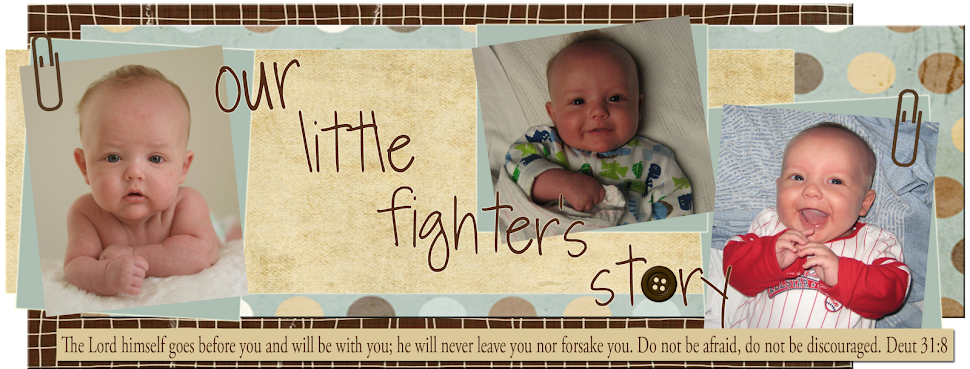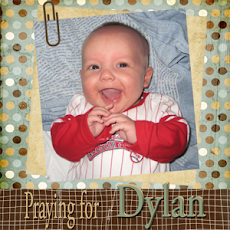Hi friends and family!! We have some exciting news to share with you!! About 5 months ago, Erik and I were introduced to a therapy called MRT that they are doing at the Brain Treatment Center in California. They are having success in treating kids with autism and adults with PTSD. We really wanted to try and get Dylan over there, but the therapy was too expensive. Fast forward to two weeks ago and that is when we got a very unexpected call! The Brain Treatment Center wants to do a study on how the therapy works on kids with "chemo brain" from leukemia and they wanted Dylan to be a part of the study group. This was totally unexpected and could only be described as a "God thing". We are packing up and heading to San Diego for two weeks in March while Dylan gets a trial of the therapy to see if it will work on him. IF it works, we will be traveling back and forth or most likely living there for a couple of months. As you know, San Diego is a very expensive place to stay. If anyone knows of anyone who has a property where we could stay or could rent for a good price, please let us know.
We are really praying that Dylan's brain responds! When we get there, they will do an EEG and get a mapping of his brain. At the end of the trial, they will do another EEG and compare them to see if it is working. We should also be able to see results in Dylan's behaviors/mannerisms within the first week. Many parents reported huge changes within the first couple of weeks in regards to focus and attention. So what is MRT? I am going to paste the info right off of their website along with some links to some pretty cool testimonials.
How do you treat autism?
We treat autism with Magnetic Resonance Therapy (MRT℠ treatment), a protocol that reduces sensory overload in the brain. MRT℠ treatment is noninvasive and painless, with mild side effects, when present. These treatments are guided by EEG, a brain scan that shows how effectively the brain understands incoming sensory information.What are the potential effects of the treatment? What can I expect to see in myself or the family member receiving treatment?
MRT℠ treatment works to improve how the brain processes sensory information in addition to how it communicates this information. Response is variable based on the disorder being treated, as well as severity of the disorder. In autism, the goal is to allow the brain to settle in a more calm state so that it can attend to and interact with the outside world without being overloaded. Additionally, as ASD is a spectrum disorder and every brain is unique, one patient may improve in one area while another patient improves in a different area. It is also possible for a patient to not improve at all.In severe cases, we have observed children going from 1-2 hours of sleep per night to full nights rest consistently. Eye contact improves, as does focus and attention. There have been cases where nonverbal children begin to babble and speak following only 2 sessions of MRT℠ treatment (and others after 30 sessions). Patients feel calmer and report no longer feeling overwhelmed by their senses. Bright lights no longer hurt patient's eyes: fans and loud noises are bearable and conversations can be held because other sounds are not so disturbing. Additionally, children who are picky eaters become more open and eager to try new foods, often gaining weight and growing several inches within several weeks of starting treatment.
The number of possibly improvements is innumerable, from social to cognitive. Once the brain is allowed to appropriately and effectively handle the information given to it, change can potentially be seen in all aspects of the spectrum disorder that is autism.
Every brain is different, and this must be taken into account when treatment is given. Response is variable.
Starting from what age can you get treatment? My son is autistic and he's 3 years old right now. I'm wondering if he can get treatment here or not.
We start treating children as young as 2 with Magnetic Resonance Therapy. MRT℠ treatment is considered a safe procedure once children turn this age when used appropriately. The brain goes through a large amount of change at a young age, so as long as we know the age and can record a good quality EEG, we can proceed with treatment once approved by our psychiatrist.How many sessions do you usually do? How long is each session?
Our program is divided into two phases. The first phase is designed to determine if MRT℠ treatment is effective and a possible treatment option for your child. The second phase is the bulk of the treatment.The first phase takes a week. We start by taking an EEG and having our psychiatrist meet with your child to determine a baseline and allow us to see what is happening in the brain. If our psychiatrist approves MRT℠ treatment treatment, we administer MRT℠ treatment for five sessions, once per day, over the period of a week. Each treatment session takes 30 minutes. At the end of this period, we take another EEG and have our psychiatrist meet with your child once more to determine if the MRT℠ treatment had produced any neurophysiological changes and also if our psychiatrist sees any change in the child. These measures combined with your opinion of your child's progress determine if we will go forward with a month of treatment.
The main course of treatment is 20 sessions of MRT℠ treatment. We administer EEGs as needed and schedule MD appointments as needed. We span these treatments over the course of two months: one MRT℠ treatment session per day, five days per week.
This all adds up to 44 sessions of MRT℠ treatment, approx. 9 weeks.
Is the MRT℠ treatment procedure painful? What does it feel like?
No, there is no pain involved in this procedure. For each magnetic pulse, patients feel a sensation similar to a finger tap on the scalp under the MRT℠ treatment coil. Additionally, the scalp may tingle during treatment. Although MRT℠ treatment stimulates cells in the brain, there is no sensation felt by the brain from this stimulation. In some cases, the MRT℠ treatment coil may be placed over a muscle or muscle group on the head, which may be uncomfortable for the patient, as stimulation will cause the muscle to contract – this is avoided when possible.How long does the treatment last?
Although there have been no durability studies on patients with autism who have received MRT℠ treatment, current research indicates that robustness of response is substantial. A six-month follow up of 99 patients with depression who benefitted from MRT℠ treatment indicated only 10% relapse rate after 6 months.In our experience, response durability is related directly to number of MRT℠ treatment sessions administered. If only given one week of treatment, any changes seen may disappear by 2-4 weeks' time. When given more stimulation: an additional two weeks to a month, this durability increases exponentially. Every brain is different however, and rate of response as well as power of response varies by patient. Additionally, with the addition of maintenance sessions or continued treatment, response power and durability have greater opportunity to improve.
What is the success rate?
We have observed response in approximately 40% of ASD patients. A "responder" is a patient who has improved by at least 30% in clinical scales in response to treatment. As autism is a spectrum disorder, there are many different aspects of the disorder, and in many cases improvement is seen, but does not pass this 30% improvement threshold to qualify a "responder," despite what clinical benefit they received.What are the potential side effects of MRT℠ treatment? Is there any permanent risk to trying this treatment?
MRT℠ treatment has mild side effects, if any.
One possible side effect is a tension headache. This can be caused by the stimulation of muscles in the forehead or on the skull under the area of MRT℠ treatment stimulation. These muscles become sore if they are repetitively stimulated, just as your bicep would become sore if curling weights for an extended period of time. These tension headaches disappear after 2-3 days of treatment as the patient becomes more acclimated to stimulation.
A second possible side effect is an increase in energy. One of the neural pathways that MRT℠ treatment stimulates is the nigro-striatal pathway, which leads to the release of the neurotransmitter, dopamine. The increase of dopamine in the brain leads to more energy and awareness. In some cases, children may become hyper in response to this. Hyperactivity in response to this dopamine normalizes after several days of rTMS.
If used improperly and outside of accepted treatment protocol, seizure may occur. The few reported cases of seizures in individuals undergoing MRT℠ treatment were either before accepted stimulation guidelines were set, or it was determined that the seizure would have occurred if no treatment had been done. However, when used within proper guidelines, seizure risk and occurrence is negligible.
There have been no reports of permanent damage from trying MRT℠ treatment. Brain activity shifts when exposed to MRT℠ treatment, but only after many sessions of MRT℠ treatment is a more permanent shift seen. If any of these changes are negative, simply discontinuing treatment is enough to allow the brain to shift back to a pre-MRT℠ treatment state.
http://vimeo.com/66453128 One possible side effect is a tension headache. This can be caused by the stimulation of muscles in the forehead or on the skull under the area of MRT℠ treatment stimulation. These muscles become sore if they are repetitively stimulated, just as your bicep would become sore if curling weights for an extended period of time. These tension headaches disappear after 2-3 days of treatment as the patient becomes more acclimated to stimulation.
A second possible side effect is an increase in energy. One of the neural pathways that MRT℠ treatment stimulates is the nigro-striatal pathway, which leads to the release of the neurotransmitter, dopamine. The increase of dopamine in the brain leads to more energy and awareness. In some cases, children may become hyper in response to this. Hyperactivity in response to this dopamine normalizes after several days of rTMS.
If used improperly and outside of accepted treatment protocol, seizure may occur. The few reported cases of seizures in individuals undergoing MRT℠ treatment were either before accepted stimulation guidelines were set, or it was determined that the seizure would have occurred if no treatment had been done. However, when used within proper guidelines, seizure risk and occurrence is negligible.
There have been no reports of permanent damage from trying MRT℠ treatment. Brain activity shifts when exposed to MRT℠ treatment, but only after many sessions of MRT℠ treatment is a more permanent shift seen. If any of these changes are negative, simply discontinuing treatment is enough to allow the brain to shift back to a pre-MRT℠ treatment state.
http://vimeo.com/66453214
http://vimeo.com/61248639
We are really excited for this therapy for Dylan! We want to give him every opportunity that we can and we think this could be huge for his continued development and growth. Please join us in praying for a place for our family to stay, for the doctors and therapists who will be working with Dylan, and for our family. We know that all things are possible with God; He has already done a miracle and healed Dylan from leukemia. We are looking forward to what He has in store for us! Thank you all for your continued support and prayer!!
Love, Michelle






Do you know where I can get this done for my son in Florida
ReplyDelete